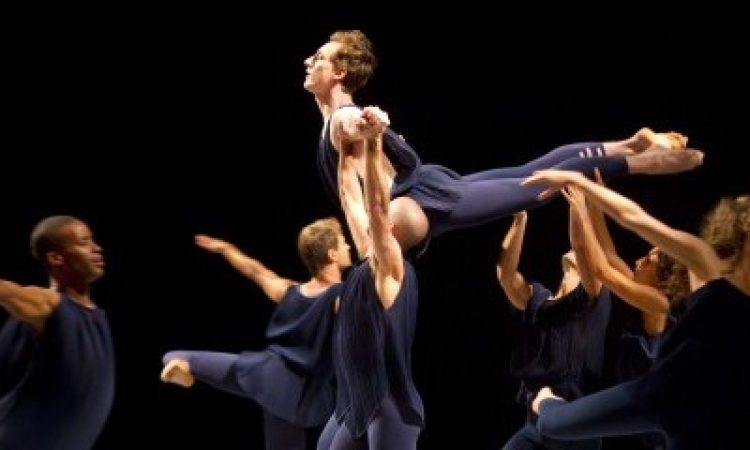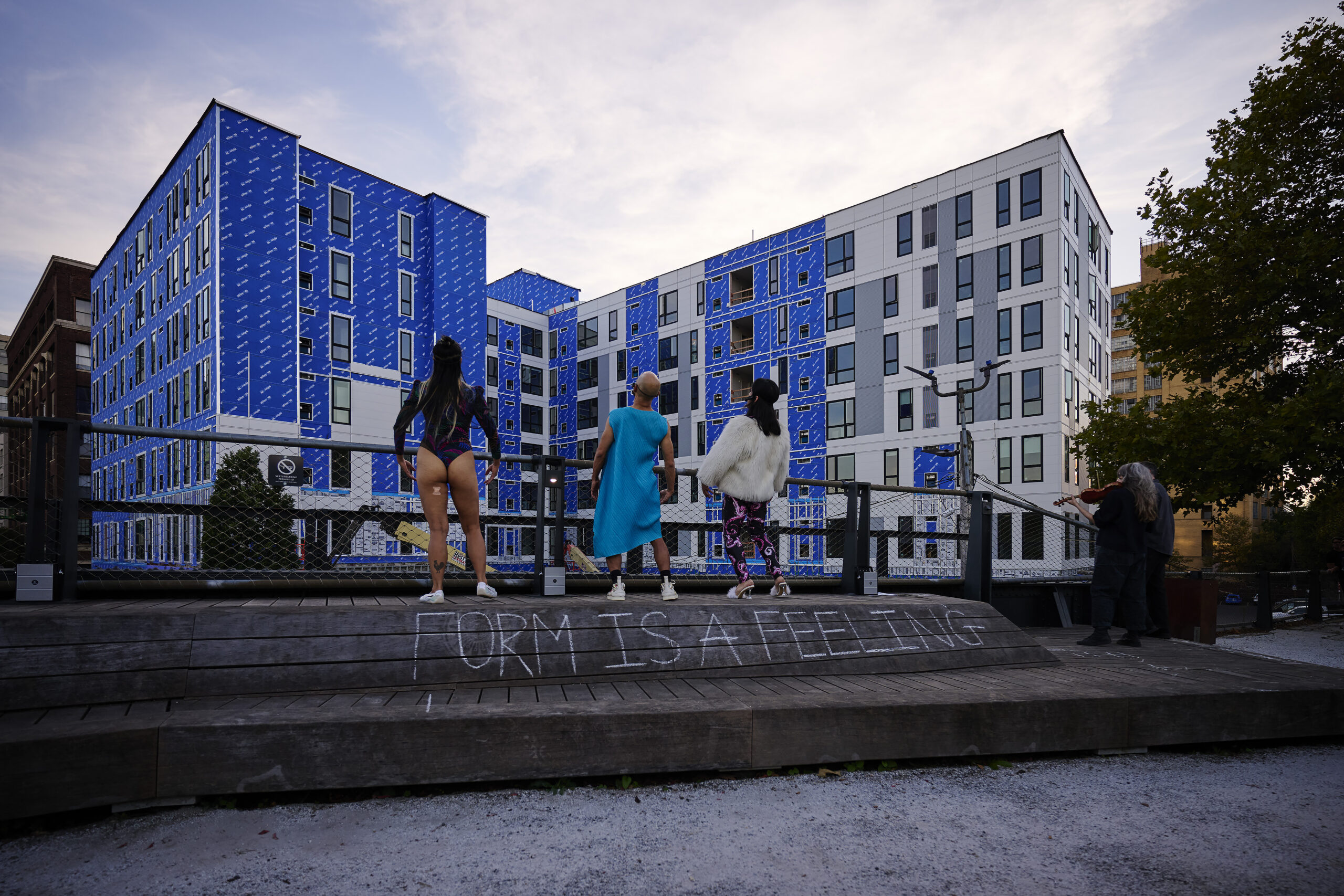On my stroll along Walnut St. toward the Zellerbach Theater at U Penn’s Annenberg Center, I stepped into a chocolate confectionary shop, looking for some strong, dark chocolate as relief from the trafficky drive into town. But by that hour, the only sweets left in the shop were frothy and pale, if attractively arranged. The fare at the Lar Lubovitch Dance Company’s performance, presented by Dance Affiliates, was also often sweet—delicious at times—but for me not entirely satisfying.
Lubovitch’s dancers are exquisite; mostly Juilliard-trained, their resumes typically feature ballet backgrounds and connections to companies like Ailey, Battleworks and Parsons. Their dancing is refined, sharp, appropriately acrobatic, but not flashy. The choreography is also skillful; Lubovitch grasps form to the point that, once I picked up his trajectory for each dance, I could drop my notepad and enjoy the inevitable unfolding of the compositional plan. He exposes his strategy and follows its logic, responding closely to the music he chooses.
A word on that music: Lubovitch has rich taste, using works by Philip Glass, Robert Schumann, Johannes Brahms, and Yevgeniy Sharlat (based on Franz Liszt’s Transcendental Etudes). None of the pieces were played live, alas, but rather they crackled forth from the Zellerbach’s gritty sound system. The choreography aligned rhythmically and dynamically with the musical phrasing, but only occasionally created the sublime dialogue that enlightens a viewer’s grasp of the score.
Perhaps the clearest work, at least in its music-dance match, was the opener, North Star (1978), also the oldest of the dances presented. The nine dancers created large and small clusters, ebbing and flowing in all directions, with diagonal pulls dominating through their bodies and the stage. The repeated and elaborated movement patterns were classically and impersonally ecstatic, like Glass’s music and the blue tunics designed by Clovis Ruffin. Contrast among the sections was offered in a solo by Elisa Clark whose staccato pulsing created flickering phrases, reminiscent of early movies. She was followed by the lusciously long Clifton Brown, whose stretchy reaches drew the whole group back onto stage for the dance’s swirling conclusion.
The concert’s closing piece, The Legend of Ten (2010), featured similar movement and choreographic strategies to those deployed in North Star, although the dancers were clothed in sharper, more fitted black outfits, by L. Isaac and Naomi Luppescu. Two movements of Brahms’s Quintet for Piano and Strings, Opus 34, elicited the by-now-familiar ebb and flow of movement and the clusters that formed and dissolved as dancers suspended, balanced, and rebounded across the stage. Here, Lubovitch allowed some moments of stillness—although I would have welcomed more—as a dancer or a group paused to watch another in his or her shining moment, or one dancer stood, center stage, for a brief bow to the audience. Folksy, footsy phrases reminiscent of balletic character dance alternated with the full-body flowing and circling that I recognized as characteristic of Lubovitch’s palette. As in North Star, Clark and Brown were featured soloists, also forming a duet that sometimes merged into the group pattern.
Crisis Variations (2011), to the Sharlat/Liszt score, stood out. This work earned Lubovitch the prize for best choreography awarded by the Prix Benois de la Danse in Moscow—a major recognition. Here Lubovitch explored stop-and-start moments, intentionally awkward partnering, angular shapes, slowed-down motion, and qualities of falling, flopping, and flailing. Strained and riling, the dancers looked at times to be grieving, wounded, or intoxicated, but I never felt their emotional commitment. Rather, the dance’s melodramatic tone elicited occasional chuckles from the audience, despite strong hints of bitter drama never fully plumbed in the work.
Also on the program was Little Rhapsodies (2007), a trio for three men, clothed by Ann Hould-Ward in soft pastels. As in the other works, I enjoyed the dancers’ etched performances (easier to appreciate with fewer dancers on stage), the alternation of rhythmic character-dance steps with emotive full-body dancing, and the manipulation of choreographic patterns. Again, I didn’t quite believe the emotional yearnings that Attila Joey Csiki’s movement suggested but never fulfilled or developed. Alas, that dark flavor I’d been seeking on my stroll to the Annenberg also eluded me when I was seated in the theater.
The lighting, by Jack Mehler, was effective in shaping the space and capturing the movement, although on occasion it nearly lost a dancer or two in the upstage shadows. The attractively arranged bows featured dancers in elegant groupings and gave the audience plenty of time to express its appreciation. At the final bow, Mr. Lubovitch himself came forward, graciously, to acknowledge the dancers and audience.
Lar Lubovitch Dance Company, Oct. 11-13 at the Annenberg Center for the Performing Arts.http://www.pennpresents.org/






